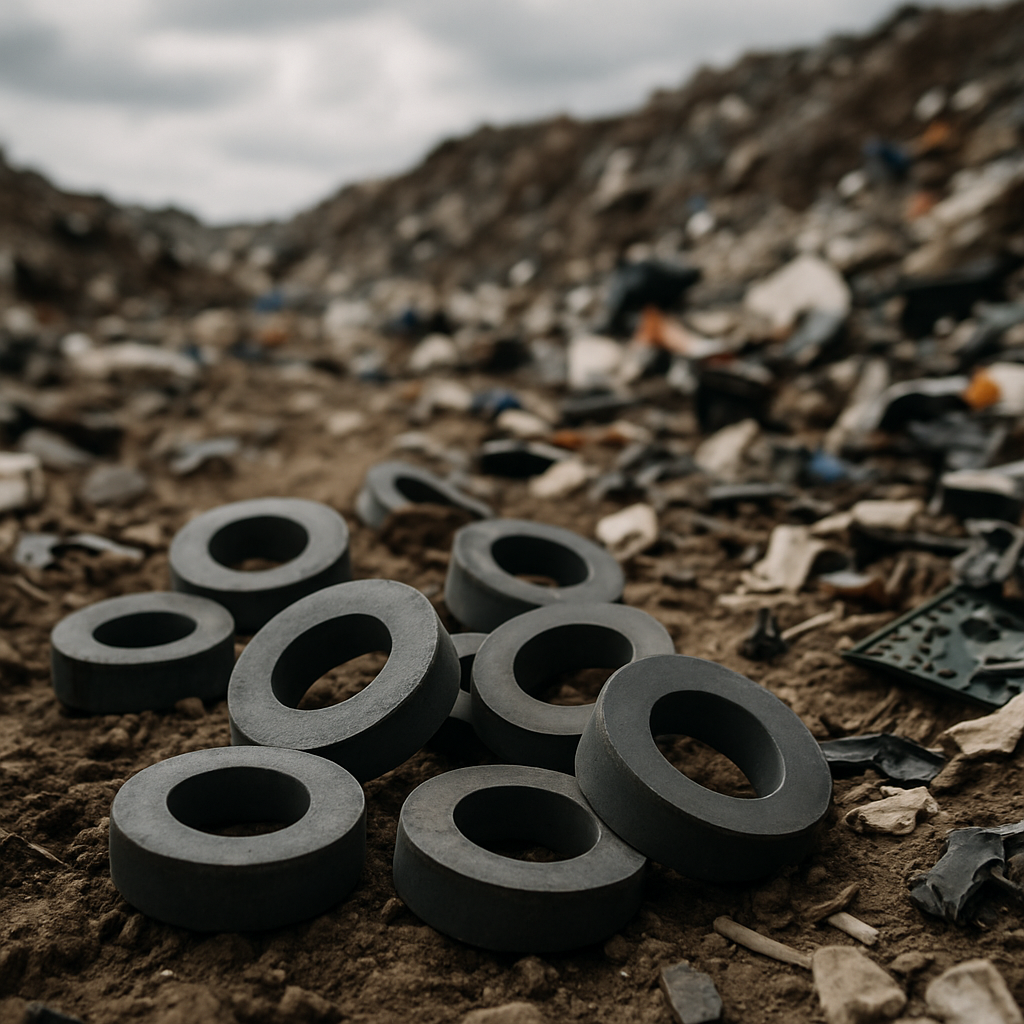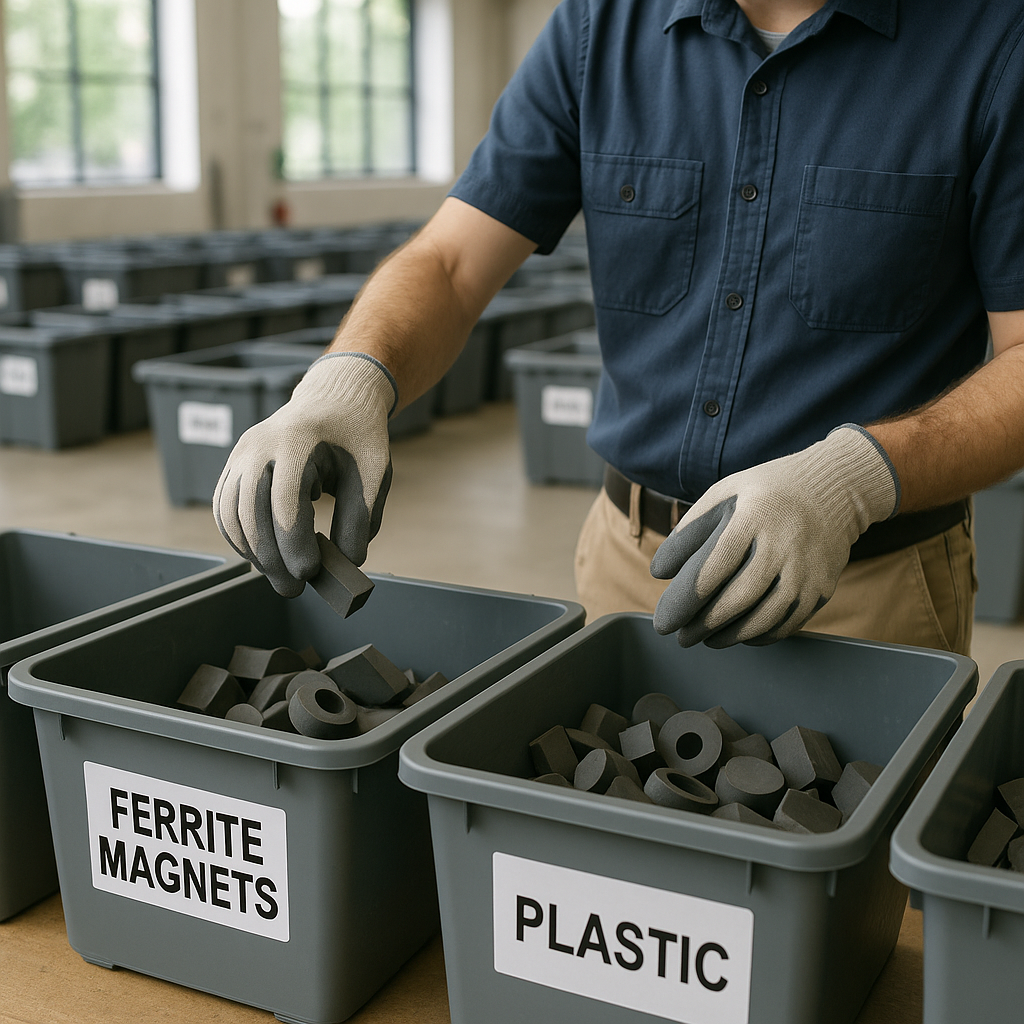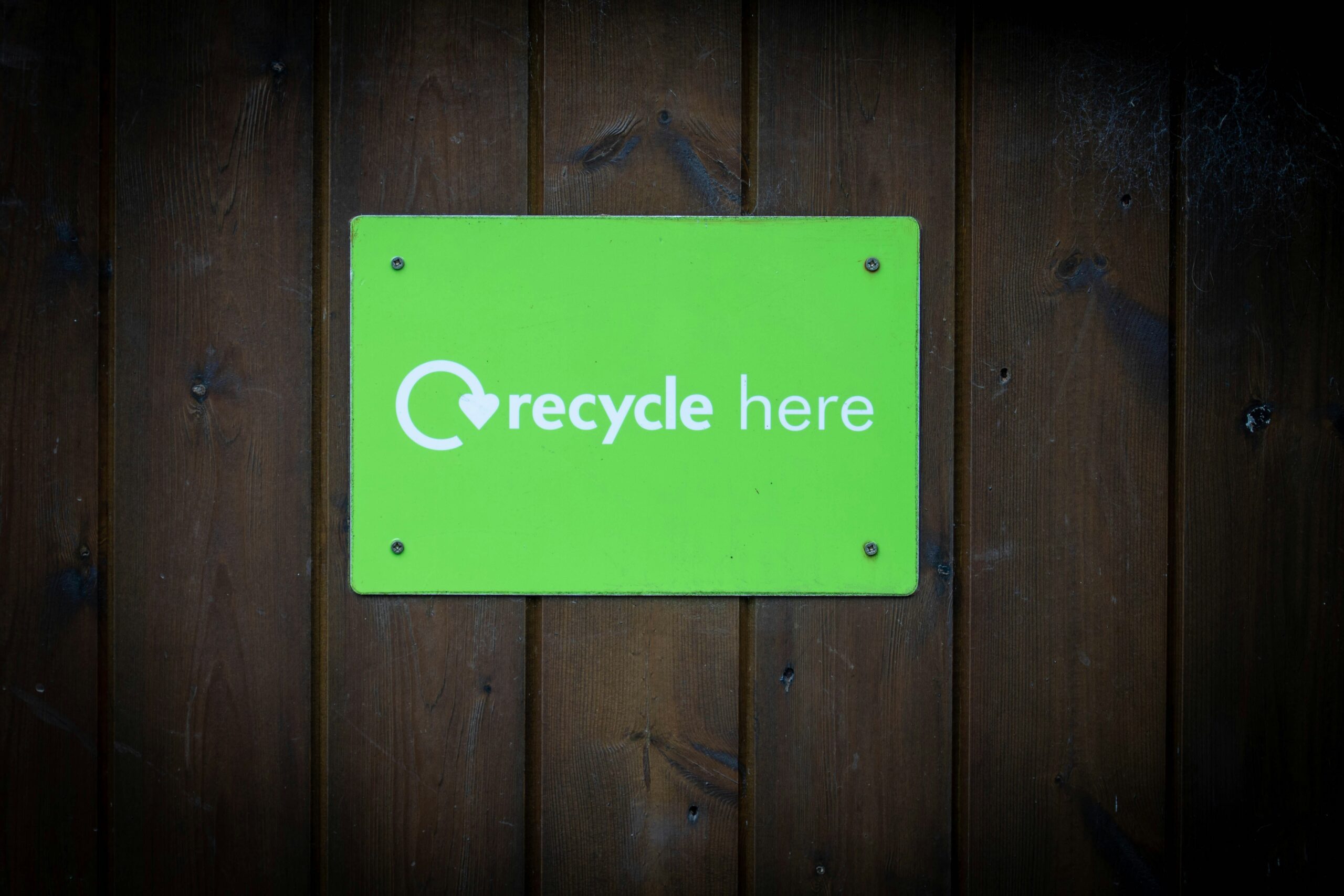5901 Botham Jean Blvd, Dallas, TX 75215
What Are Ferrite Magnets and Why Is Proper Disposal Important?
July 22, 2025Ferrite magnets, also known as ceramic magnets, are permanent magnets made from iron oxide combined with other metallic elements such as barium or strontium carbonate. These inexpensive yet durable magnets account for nearly 80% of the global magnet market by volume due to their excellent corrosion resistance and favorable cost-to-performance ratio. They are found in numerous everyday items—from refrigerator decorations to loudspeakers and small electric motors.
Despite their common use, the proper disposal of ferrite magnets has become an important environmental concern. When improperly discarded in landfills, these magnets can gradually break down, releasing their constituent materials into soil and water. Although less toxic than rare earth magnets, ferrite magnets still contain metals that can accumulate in the environment over time.
The environmental impact extends beyond potential contamination. Producing new ferrite magnets requires extensive mining and processing of raw materials, consuming significant energy and generating greenhouse gas emissions. By implementing proper disposal and recycling practices, we can reduce the need for new raw material extraction, minimize waste accumulation, and lower the overall environmental footprint of these widely used magnetic materials.
What Are the Environmental Impacts of Improper Ferrite Magnet Disposal?

Improper disposal of ferrite magnets poses several significant environmental threats. When these magnets end up in landfills, they begin a slow but harmful degradation process that releases toxic substances into our ecosystems. Let’s examine the specific environmental impacts.
Soil and Water Contamination
Ferrite magnets contain iron oxide combined with barium or strontium carbonate. Although these materials are generally less toxic than rare-earth magnets, they still present environmental hazards when improperly disposed of. In landfills, moisture and chemical reactions gradually break down the magnets, allowing heavy metals to leach into surrounding soil.
Once these metals enter the soil, they can persist for decades and eventually make their way into groundwater supplies. This contamination can affect drinking water quality in nearby communities and damage aquatic ecosystems. Studies have found that heavy metal contamination from electronic waste can travel significant distances from disposal sites, affecting broader areas than initially expected.
Perpetuation of Unsustainable Mining
Every ferrite magnet that ends up in a landfill represents wasted resources that must be replaced through new mining. The mining of iron and other metals used in ferrite magnets causes substantial environmental issues, including deforestation, habitat destruction, and topsoil loss. Open-pit mining operations leave scars on landscapes that take generations to recover.
Mining activities also consume enormous amounts of energy and water. Extracting the raw materials needed for a single ton of ferrite magnets requires thousands of gallons of water and generates significant carbon emissions. By failing to recycle existing magnets, we unnecessarily perpetuate these destructive mining practices.
Harmful Emissions from Incineration
When electronic devices containing ferrite magnets are incinerated rather than properly recycled, they release several harmful substances into the atmosphere. The high temperatures of incineration facilities break down the magnet components and transform them into airborne pollutants.
These emissions include particulate matter, heavy metals, and other pollutants that contribute to air quality degradation. When these particles settle back to earth, they can contaminate soil and water sources far from the original incineration site. Additionally, the incineration process itself requires significant energy, contributing further to climate change through carbon emissions.
Waste Management Challenges
Ferrite magnets present unique challenges for waste processing facilities. Their strong magnetic fields can interfere with sorting equipment and potentially damage machinery. This makes the proper handling of magnetic waste more complex and costly for recycling centers.
When these magnets are mixed with general waste, they reduce the efficiency of recycling operations and increase the likelihood that otherwise recyclable materials will end up in landfills. The magnetic properties that make these materials valuable during their useful life become problematic during disposal if not properly managed.
What Are the Best Practices for Disposing of Ferrite Magnets?

Proper disposal of ferrite magnets is essential for environmental protection and safety. These ceramic magnets contain iron oxide combined with barium or strontium carbonate and require specific handling procedures when they reach the end of their useful life.
Recycling: The Preferred Disposal Method
Recycling is the most environmentally responsible way to dispose of ferrite magnets. Professional waste disposal services that specialize in electronic or magnetic materials can process these magnets correctly. When recycled, ferrite magnets typically go through standard ferrous metal recycling systems where they are melted down and repurposed as iron input for steel production.
However, ferrite magnets present a unique recycling challenge. Although inexpensive to produce from raw materials, they are costly to recycle. The economic hurdle stems from the low market value of recovered materials compared to the energy and processing costs required for recycling.
Demagnetization Before Disposal
For large, powerful ferrite magnets, demagnetization is an important safety step before disposal. This process reduces the magnetic field, making the magnets easier and safer to handle. Demagnetization can be achieved by heating the magnet to its Curie temperature (approximately 450°C for ferrite magnets), though this should only be attempted by professionals with proper equipment.
Containment Options
If recycling isn’t immediately available, place strong magnets in steel containers before disposal. The steel acts as a shield, containing the magnetic field and preventing unwanted attraction to waste processing equipment. This simple step can prevent damage to machinery at waste facilities and reduce hazards for waste management workers.
Safety Precautions
Never cut, crush, or smash ferrite magnets during disposal. These magnets are ceramic in nature and can shatter into sharp fragments that pose injury risks. Additionally, the friction and heat generated when cutting magnets can create fire hazards.
Store damaged or unwanted magnets securely away from children and pets. Even small ferrite magnets can cause serious injuries if swallowed or mishandled. Keep them in clearly labeled containers until proper disposal can be arranged.
Alternative Solutions
If the magnets are still functional, consider donating them to schools for educational purposes. Many science classes use ferrite magnets for demonstrations and experiments. Local recycling centers may also accept ferrite magnets as part of their electronic waste collection programs.
For businesses dealing with large quantities of ferrite magnets, specialized magnetic material recyclers might offer better economic terms for disposal, as they can process the materials more efficiently than general waste services.
Following these best practices ensures ferrite magnets are disposed of safely and with minimal environmental impact, contributing to more sustainable waste management practices.
How Can We Improve Ferrite Magnet Disposal and Recycling?

Improving ferrite magnet disposal and recycling requires a comprehensive approach that addresses technological, design, and policy challenges. Developing more efficient recycling technologies is crucial, with processes like wet milling followed by annealing at optimal temperatures proving effective for recovering valuable materials from end-of-life magnets. These methods can significantly reduce environmental impacts compared to virgin material production while maintaining high-quality magnetic properties.
Beyond technological advancements, progress must occur across the entire waste management ecosystem. This involves promoting sustainable product design for easier magnet recovery, increasing public awareness about proper disposal methods, enforcing stricter regulations on electronic waste management, and investing in ongoing research for economically viable recycling solutions. For assistance with your ferrite magnet recycling needs, contact Okon Recycling at 214-717-4083.
